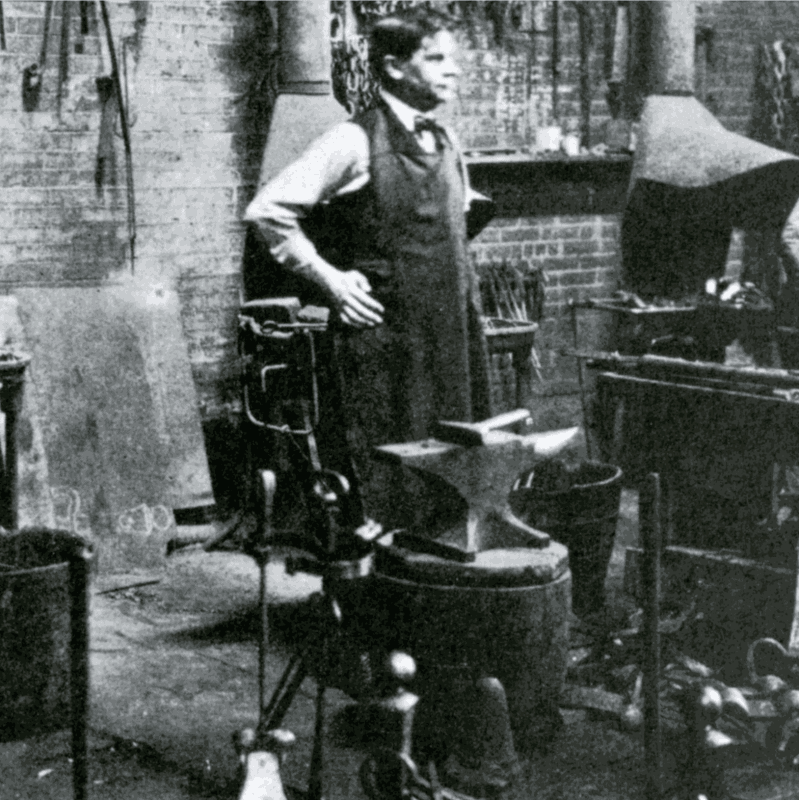"When a man's home is born out of his heart and developed through his labor and perfected through his sense of beauty, it is the very cornerstone of life."
-Gustav Stickley
Career
Stickley's furniture designs reflected his ideals of simplicity, honesty in construction and truth to materials. Unadorned, plain surfaces were enlivened by the careful application of colorants so as not to obscure the grain of the wood. He also exposed the mortise and tenon joinery of each piece to emphasize the structural qualities of the works. Hammered metal hardware, in armor-bright polished iron or patinated copper, emphasized the handmade qualities of furniture which was fabricated using both handworking techniques and modern woodworking machinery. Dyed leather, canvas, terry cloth and other upholstery materials complemented the designs.
Those ideals – simplicity, honesty and truth – were reflected in his trademark, which includes the Flemish phrase 'Als Ik Kan' inside a joiner's compass. The phrase is generally translated as 'to the best of my ability.' His firm's work, nostalgic in its pre-industrial handicraft and proto-modern in its functional simplicity, was popularly referred to as being in the Mission style, though Stickley despised the term as misleading. In 1903, he changed the name of his company to the Craftsman Workshops and began a concerted effort to market his works – including furniture as well as textiles, lighting and metalwork – as Craftsman products. Eventually, over 100 retailers across the United States represented the Craftsman Workshops.
